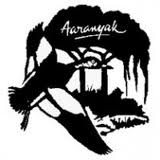Surface Water
Workshop on Environmental Flows, Aaranyak and River Research Centre (Kerala), May 6, 2012, Guwahati
Posted on 06 May, 2012 12:31 AMOrganisers: Aaranyak and River Research Centre
Venue: Indian Institute of Bank Management,
Khanapara,
Guwahati

The state and fate of Himalayan glaciers - A paper published in the magazine Science
Posted on 05 May, 2012 06:21 PMThe paper argues that there is a poor understanding of the processes affecting the Himalayan glaciers in the context of the diversity of climatic conditions and the extremes of topographical relief within the region, making projections speculative, which can have a significant impact on the future of water resources in the area. It is thus important to have more information on the status of the glaciers in the Himalayan region.
The Supreme Court and its directions on Interlinking of Rivers (ILR): India and her people will be greatly benefited by its implementation
Posted on 03 May, 2012 07:03 PMAuthor : J. Prabudoss
Viability of Clean Development Mechanism (CDM) projects in India: Study of Chanju CDM project in Chamba district,Himachal Pradesh
Posted on 03 May, 2012 06:30 PMThe present paper is an attempt of the researcher to make a comparative analysis between the expected benefits received by the executing agency under CDM and the actual benefits people are expected to receive from Chanju-I Hydro Electric Project.
Environmental knowledge for hydro-meteorological disaster management: Capacity development in disaster risk management
Posted on 03 May, 2012 02:27 PMPoor understanding of the environment – its structure, function, resources, especially at the level of planners and policy makers, have resulted in increasing frequency and intensity of hazards in nature. Understanding of the environment, its processes and resources are important for the early detection of hydro-meteorological hazards, prediction of disaster risk and scenarios and in evolving m
Workshop in Mumbai, India Against Corruption, SANDRP, on May 4, 2012, Mumbai
Posted on 01 May, 2012 09:26 AMOrganiser: India Against Corruption, South Asia Network on Dams, Rivers, & People (SANDRP)
Venue: Karnataka Sangh Hall,
Vishweshwaraya Smarak Mandir,
Moghul lane, Station Road,
Matunga West,
Mumbai -400016
People in National capital territory of Delhi are far away from safe drinking water: Role of governance and civil society
Posted on 30 Apr, 2012 09:56 PMCitizens voice alarm over recent Supreme Court judgement on interlinking of rivers
Posted on 25 Apr, 2012 10:39 AMThe Supreme Court of India has in its judgment of 27 February 2012 on the interlinking of rivers project, given categorical directions to the Executive Government to implement the ‘project’ as a whole in a time bound manner and has also asked the Centre to appoint a Special Committee to work out the modalities and oversee the implementation of the project.
Critical review of the impacts, challenges, prospects and conflict management for vitally needed inter-linking of rivers in India
Posted on 23 Apr, 2012 12:17 PMGuest post by : Er. Radhey Shyam Goel
1. Introduction
Interlinking of rivers project: A disquieting judgement - Ramaswamy Iyer's perspective in the EPW on the recent Supreme Court decision
Posted on 20 Apr, 2012 10:52 PM
1. Introduction
Two writ petitions were filed in 2002 on the subject of interlinking. The judgement finally passed in 2012 directs the implementation of this project. This judgement is disturbing for the following reasons:





